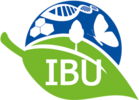Kontakt
Carmen Alicia Rivera Pérez
Institut für Biologie und Umweltwissenschaften (IBU) (» Postanschrift)
Karte
Carmen Alicia Rivera Perez
Wissenschaftlerin
Carmen Alicia Rivera Pérez
Institut für Biologie und Umweltwissenschaften (IBU) (» Postanschrift)
Lebenslauf
- Since 2022 Research Assistant, University of Oldenburg, Germany.
- 2017-2021 Research Assistant, University of Göttingen, Germany.
- 2014-2017 MSc. Ecology, University of Bremen, Germany.
- 2011-2014 BSc. Biology, University of Wisconsin-La Crosse, USA.
Forschungsinteressen
In our project, we mainly focus on the symbiosis between fungi and plants as a tolerance trait in the salt marsh. The salt marsh is a dynamic environment that is subject to inundation and drought cycles and is characterized by fluctuations in oxygen availability and salt concentration along an elevation gradient. Under these conditions, the organisms living in the salt marsh are required to possess certain tolerance mechanisms that enable them to thrive under low oxygen availability or increased salinity. One strategy that salt marsh plants have evolved is the symbiotic association with Dark Septate Endophytic (DSE) fungi (facultative biotrophs) and arbuscular mycorrhizal fungi (obligate biotrophs). Although these fungi are not easily visible in the salt marsh, they play essential roles in the ecological performance of plant species by influencing nutrient uptake and tolerance to abiotic stress. Since DSE fungi are known to possess remarkably heterogeneous genetic traits, depending on multiple factors like host identity, host age, or environmental parameters, the fungal partners may behave as beneficial or harmful symbionts. Thus, the fungal lifestyle may range from parasitic to mutualistic and even exhibit saprophytic behavior in different circumstances. This symbiotic spectrum might even be observable at the individual level and may be influenced by interactions between fungi that live in the same host. Our main goal is to elucidate the functional contribution of fungi to the ecological stability of the salt marsh.
At this point of our project, we want to understand how plant-fungi symbiotic interactions operate in vivo in the salt marsh and gain insights of the fungal functional diversity from a molecular perspective. We are trying to decipher the underlying mechanisms of salt tolerance in the symbiotic partners. To accomplish this, we combine field experiments and greenhouse experiments to study the effect of salinity on the symbiosis between Salicornia europaea and associated fungal partners using metatranscriptomics. Furthermore, in collaboration with SP1 and SP3, we are studying the spatial distribution of roots in the salt marsh and the interactions between plants and animals using metabarcoding and eDNA approaches to broaden our understanding of the salt marsh food webs.
Publikationen
- Lu, J. Z., Yang, J., Bluhm, C., Foltran, E., Rivera Pérez, C. A., Glatthorn, J., Ammer, C., Lamersdorf, N., Polle, A., Berg, M., Potapov, A. M., & Scheu, S. (2025). Mixed forests with native species mitigate impacts of introduced Douglas fir on soil decomposers (Collembola). Ecological Applications, 35(3). https://doi.org/10.1002/eap.70034
- Lu, J. Z., Bluhm, C., Foltran, E., Rivera Pérez, C. A., Ammer, C., Caruso, T., Glatthorn, J., Lamersdorf, N., Polle, A., Sandmann, D., Schaefer, I., Schuldt, A., Maraun, M., Scheu, S. 2024. Functional traits in soil-living oribatid mites unveil trophic reorganization in belowground communities by introduced tree species. Geoderma, 448(June). https://doi.org/10.1016/j.geoderma.2024.116947
- Topanotti, L. R., Fuchs, J. M., Albert, M., Schick, J., Penanhoat, A., Lu, J-Z., Rivera Pérez, C. A., Foltran, E. C., Appleby, S., Wildermuth, B., Stuckenberg, T., Likulunga, E. L., Glatthorn, J., Schuldt, A., Polle, A., Balkenhol, N., Scheu, S., Ammer, C., Paul, C., Gerrero-Ramírez, N. 2024. Enhancing economic multifunctionality without compromising multidiversity and ecosystem multifunctionality via forest enrichment. Science Advances, 10(43), 17–19. https://doi.org/10.1126/sciadv.adp6566
- Yang, Y., Rivera Pérez, C. A., Richter-Heitmann, T., Nimzyk, R., Friedrich, M. W., & Reich, M. 2023. Effects of oxygen availability on mycobenthic communities of marine coastal sediments. Scientific Reports, 13(1), 15218. https://doi.org/10.1038/s41598-023-42329-1
- Glatthorn J, Appleby S, Balkenhol N, Kriegel P, Likulunga LE, Lu JZ, Matevski D, Polle A, Riebl H, Rivera Pérez CA, Scheu S, Seinsche A, Schall P, Schuldt A, Wingender S, Ammer C. 2023. Species diversity of forest floor biota in non-native Douglas-fir stands is similar to that of native stands. Ecosphere, vol. 14, no. 7, 2023, doi:10.1002/ecs2.4609.
- Rivera Pérez, C. A., Janz, D., Schneider, D., Daniel, R., Polle, A. 2022. Transcriptional landscape of ectomycorrhizal fungi and their host provide insight into N uptake from forest soil.
mSystems, 2021.07.23.453179. https://doi.org/10.1128/mSystems.00957-21 - Likulunga, E. L., Rivera Pérez, C. A., Schneider, D., Daniel, R., Polle, A. 2021. Tree species
composition and soil properties in pure and mixed beech-conifer stands drive soil fungal
communities. Forest Ecology and Management. https://doi.org/10.1016/j.foreco.2021.119709 - Belby, Colin S., Rivera Pérez, C. A., Gerrish, Gretchen A. 2015. Understanding ecosystem
change in Upper Mississippi River backwaters through geochemical and biological analyses
of sediment cores. River Systems. 21: 163-181, http://dx.doi.org/10.1127/rs/2015/0102

